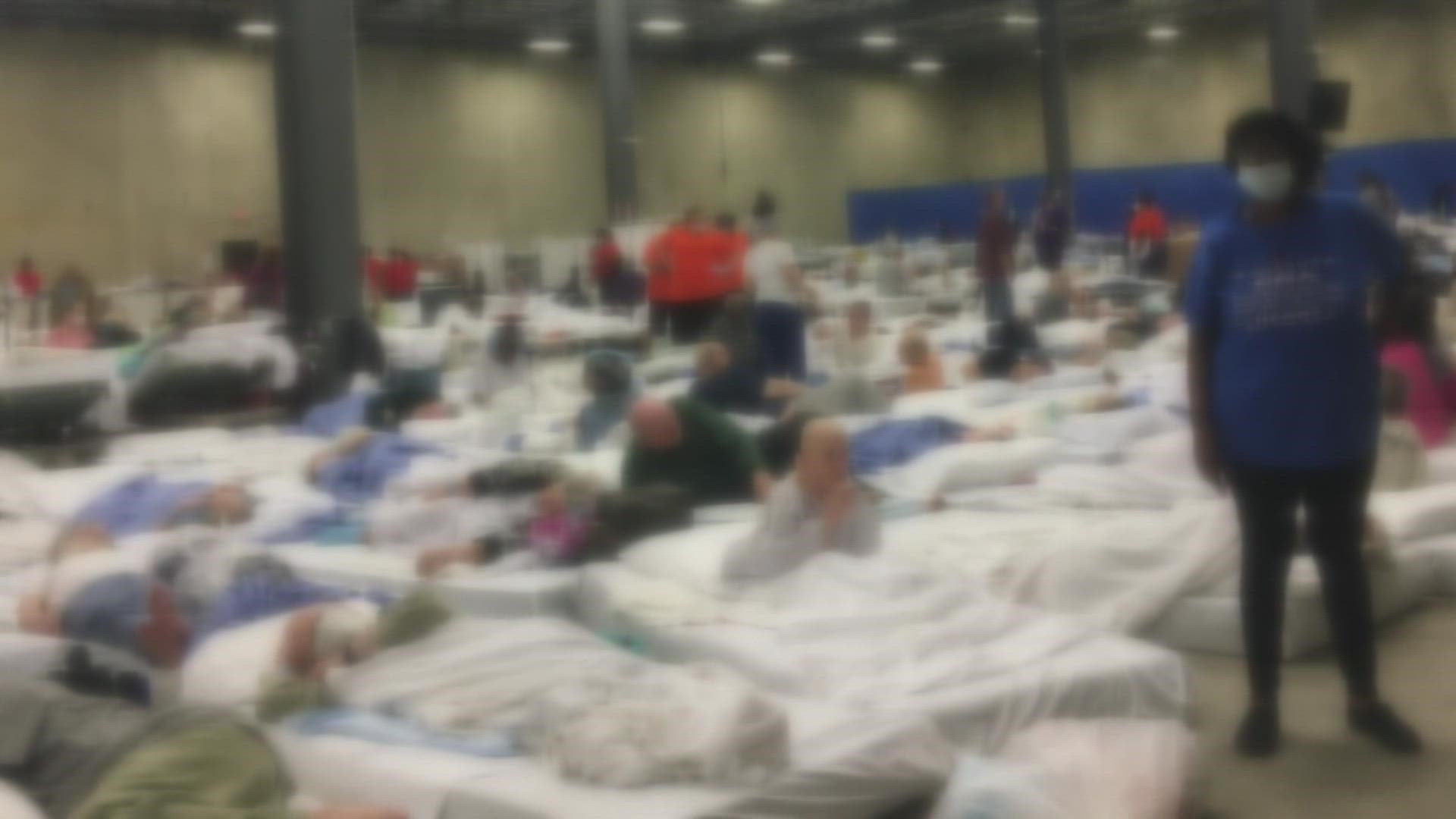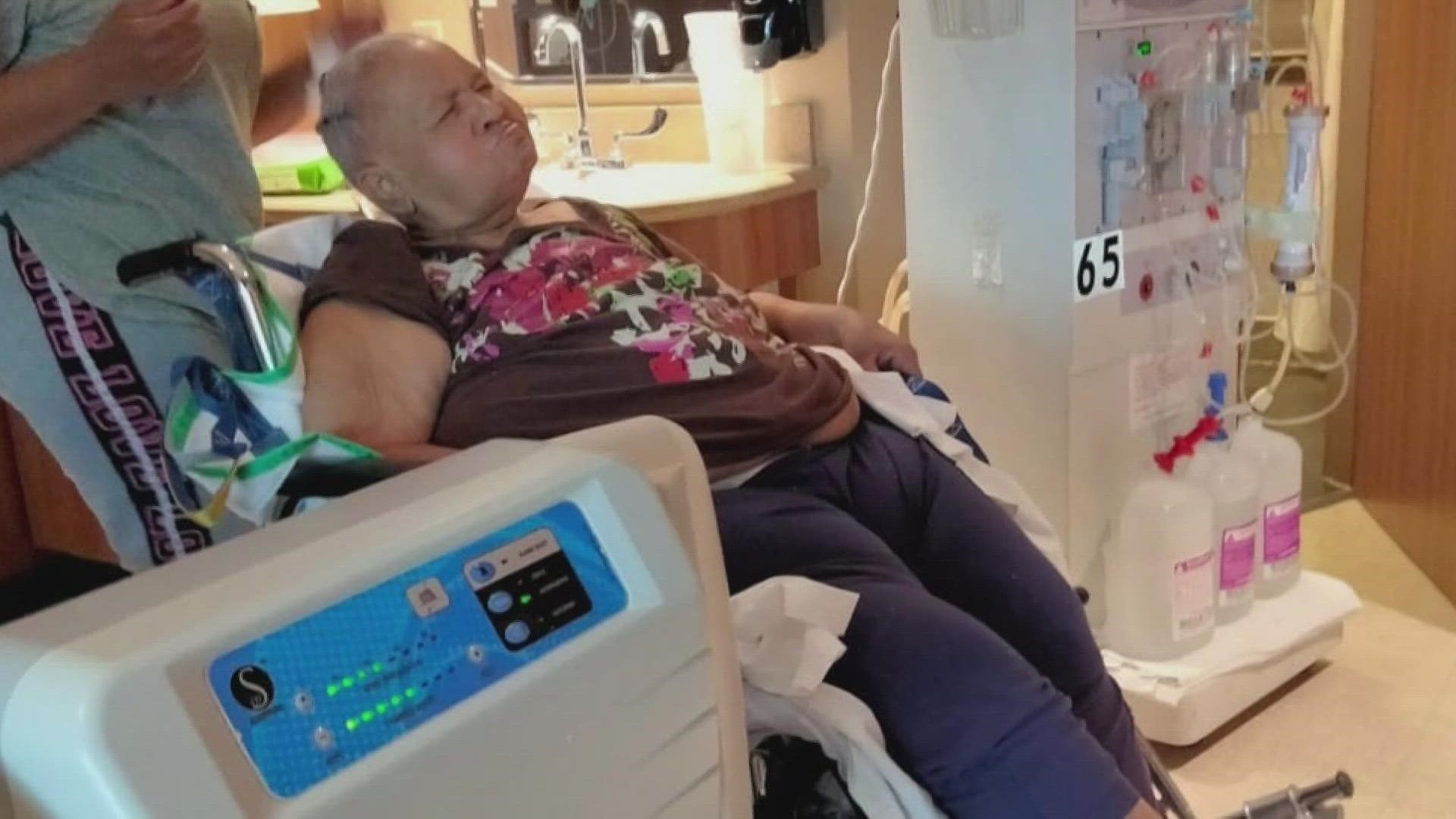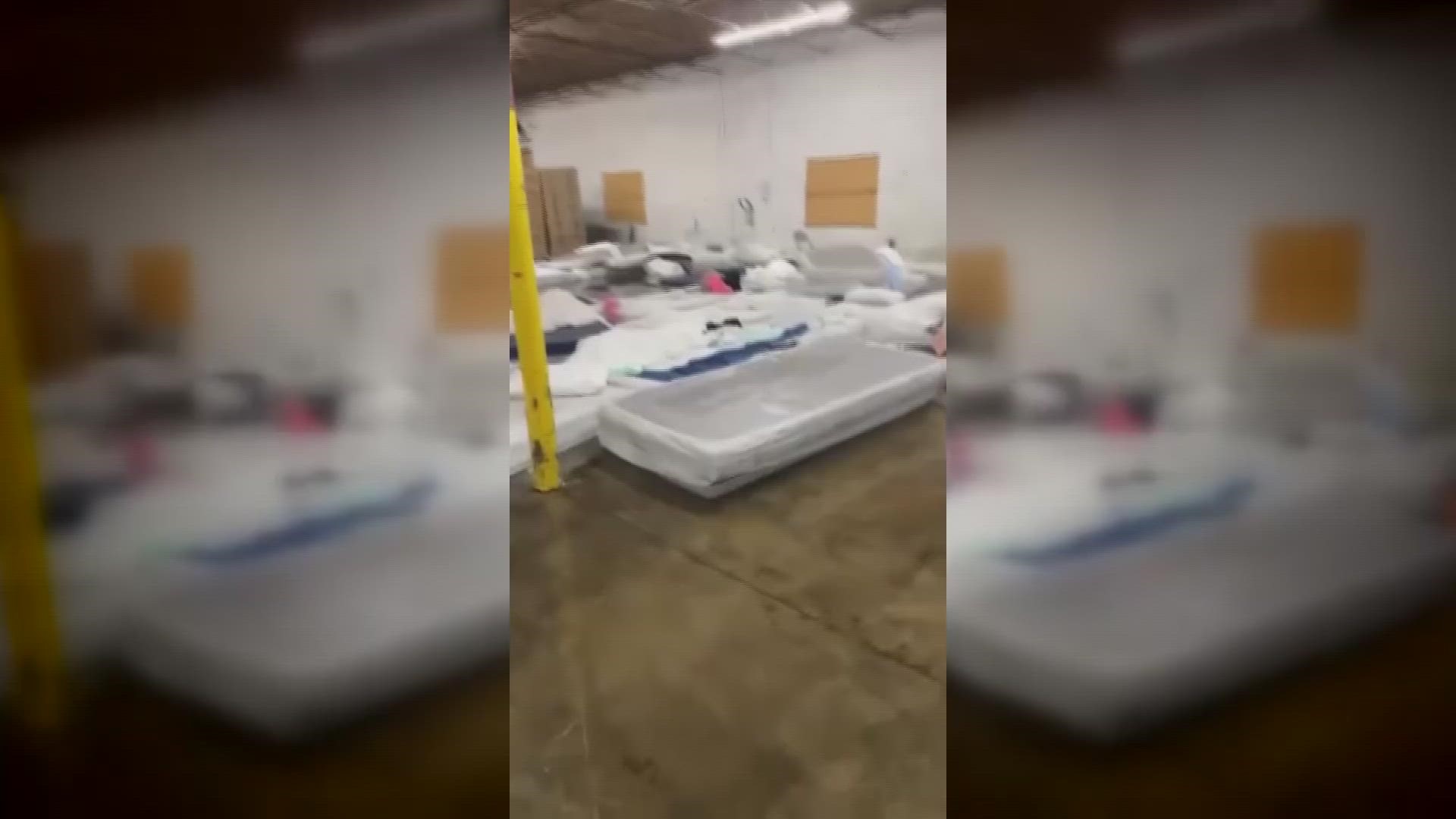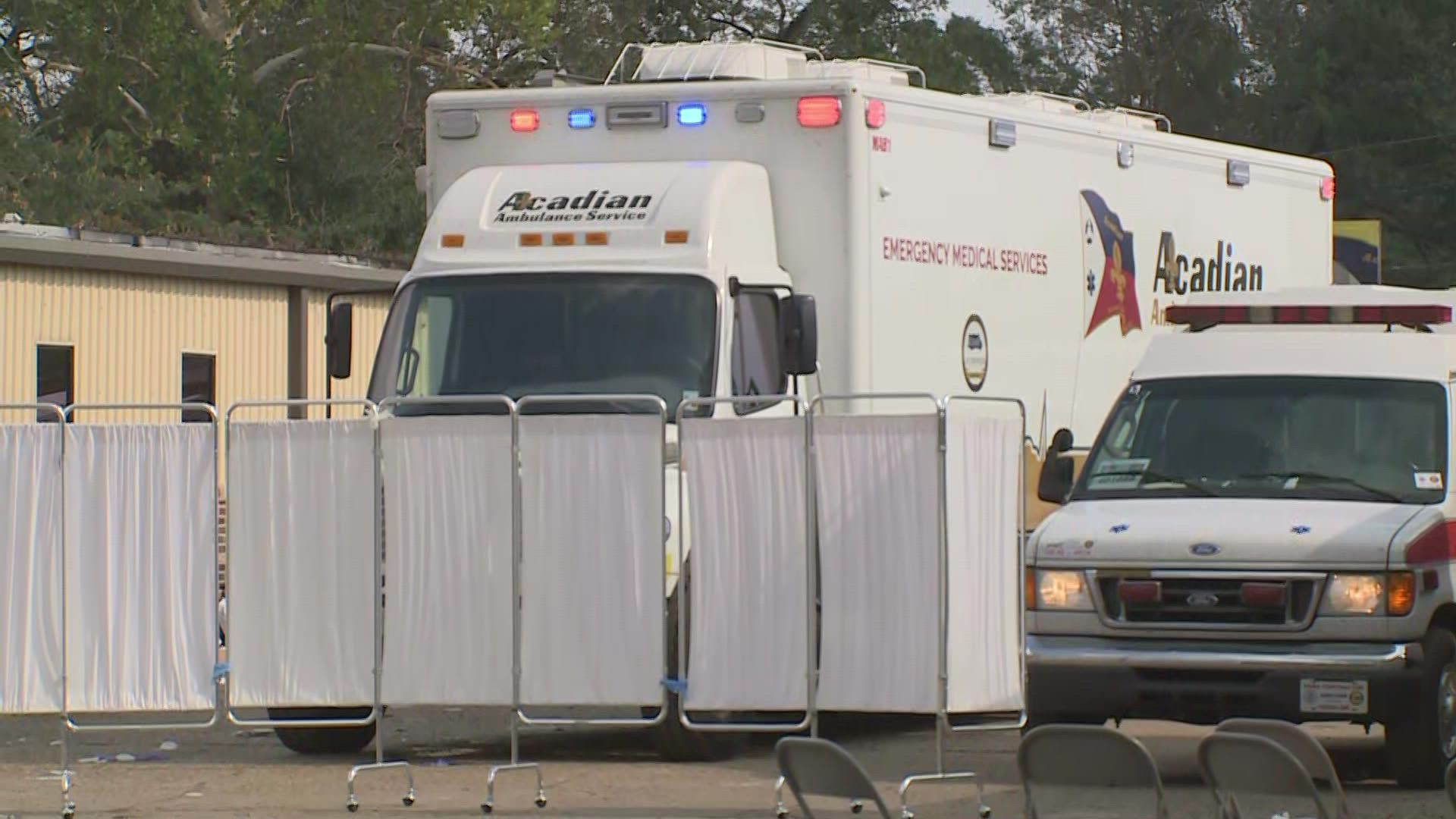NEW ORLEANS — In the hours after the Louisiana Department of Health began a massive rescue effort to get 843 nursing home residents out of an evacuation site best described as an industrial warehouse, health officials admitted they had inspected the facility several times in the days leading up to Hurricane Ida.
At least four nursing home residents died from conditions at that cramped and flooded warehouse before the LDH swooped in to move them on Sept. 1.
Three of them were hospice patients at the end of their lives before Ida hit, but they spent their final hours away from their families in squalor.
The death toll among those nursing home evacuees has since climbed to 15, with five marked as storm-related. Dozens more have been hospitalized, many with infections or conditions family members say could only have happened at the warehouse.
WHO KNEW WHAT AND WHEN
The seven nursing homes where these residents came from, like the warehouse they sheltered, are owned by Bob Dean, a real-estate developer.
According to state records, the decision to evacuate residents to the warehouse, at 129 Calhoun Street in Independence, was Dean’s.
But LDH is facing scrutiny from families and lawmakers over what they knew about the facility ahead of time, how Dean got approval to take residents there in the first place, and why LDH didn’t intervene until three days after the storm.
Surviving residents describe five days living in putrid conditions on blow-up mattresses. Some residents were lying naked, inches away from each other with little to no privacy, unable to make it to the bathroom in time because of a lack of staff to help them.
VIDEO: 'I panicked'
"MIXTURE OF A ZOO AND INSANE ASYLUM"
Michael Terranova was one of them. He’s a long-time commercial photographer in New Orleans who took pictures of a who’s who of New Orleans musicians during his decades as a commercial photographer.
“He's the youngest of us and he was a great photographer in New Orleans, self-taught when he was very young. He would develop his pictures in my mom's bathroom,” said his sister, Mickey Ryan.
That self-taught talent served him well, getting him an up-close look at some of the best of New Orleans. One of his first big shoots was former Saints kicker Morton Anderson for a poster, where Anderson was wearing a black mesh crop top. Terranova didn’t just capture New Orleans’ celebrities, but food, drinks, classic landscapes around the French Quarter and the characters who bring the city to life.
That is, until a massive stroke paralyzed one side of Terranova’s body. He said he hasn’t walked in four years.
“It makes me cry. But I’m over the crying. And now I’m just into making sure he's taken care of,” Ryan said.
Family members put Terranova at Maison Orleans nursing home Uptown. That’s where he lived until Aug. 28, when Dean made the decision to evacuate all of his nursing homes to Independence ahead of Ida.
“It was crazy. They were going nuts. It was mixture of a zoo and an insane asylum,” Terranova recalled.
VIDEO: Lawsuits filed in warehouse case
INSPECTOR DID CHECK OUT WAREHOUSE
Hundreds of state health records, reviewed by WWL-TV, show that LDH signed off on some of the accommodations before the storm and knew about deteriorating conditions at the facility in the days that followed.
Gov. John Bel Edwards also admitted as such, saying LDH had inspected the facility several times before and after the storm, and Edwards vowed the details about how it happened would be the subject of a full investigation. That is still ongoing.
A review of the inspection records reveals Aug. 27, the day the evacuation warehouse was opened, an LDH health inspector walked through it.
That inspector found that despite mattresses lying in close proximity across the floor, the warehouse had enough supplies to keep 700 residents comfortable for up to a week.
That’s the day the first wave of residents arrived from seven nursing homes across four parishes. Bob Dean's nursing homes would ultimately send 843 people instead of the 700 the facility was rated for.
“They kept rolling in more residents. I'm like, 'Oh my God.' We had to keep pushing the residents tighter and tighter to fit everyone in,” said nurse Natalie Henderson, who was stationed at the warehouse for the evacuation.
VIDEO: Records detail "horrific conditions"
If you have a loved one who was at this facility or worked there yourself, we would like to talk with you. Email cmccrory@wwltv.com or text 504-641-3471.
On Aug. 28, a day before Ida hit, another unidentified LDH inspector wrote that they, at that point, were expecting 845 people to shelter in the facility, but made no mention in their official observations of how the facility would deal with nearly 150 extra people.
The inspector interviewed three of the first patients to arrive. They all said, "so far so good" and that their needs were being met.
The same day, one of the first 9-1-1 calls from the facility came in from a resident worried she'd been kidnapped.
But by Aug. 29, as Ida approached Louisiana's coast and the storm’s outer bands of wind and rain started slamming Tangipahoa Parish, health inspectors and residents saw the situation start to unravel.
“I don't know where else to put us, but it had to be better than that on the floor of a warehouse,” Terranova said.
VIDEO: NURSING HOMES THAT WENT TO WAREHOUSE ARE SHUT DOWN
'DOMINO EFFECT OF FAILURES'
Nursing home advocate and Executive Director of the Long Term Community Care Coalition Richard Mollot said the situation at the warehouse was the result of a “domino effect of failures.”
He said the residents are the ones who pay the price and that any evacuation plan to place residents on mattresses on the floor of a warehouse is inappropriate, callous and cruel.
“It was frankly shocking to me, even after all these years, to read those reports and see what was going on online because of the of the foundational risk the residents were being put into,” Mollot said, even after 20 years of advocacy work.
As Ida passed over the warehouse the night of Aug. 29, conditions worsened, according to inspection reports and witness accounts.
Part of the warehouse flooded, and most of the evacuees were packed into the main room, about the size of a high school gym.
Terranova described seeing water pour down the walls, filling up the floor where residents laid on their mattresses. He said he contemplated death as the water rose.
"I kept thinking all night, I wonder what it feels like… to drown," he said. "So, I stayed up so I could hold on to my mattress."
As the sun rose the morning after Ida, on Aug. 30, word began to spread that there was water in the warehouse. At 6:23 a.m., an unidentified LDH official got a text:
"The Bob Dean facility in Tangipahoa has taken on 8 inches of water."
VIDEO: INITIAL REPORTS FROM WAREHOUSE AFTER IDA
DISMAL SCENE
9-1-1 calls from inside the warehouse painted a dismal scene, with residents suffering. The call records from the Tangipahoa 911 District indicate by midday, at least one resident was fighting for her life.
Text records also indicate some of the generators powering the facility kept failing, one of which couldn't adequately power chillers for oxygen tanks. Officials brought in more tanks the next day to help the situation.
By 3:31 p.m., an LDH official texted Bob Dean to tell him "there are problems" with the warehouse. Hours later, Dean responded with a threatening, profanity-laden message that indicated he knew about it.
When the first inspector got to the facility that afternoon, a nursing assistant greeted them outside and told them to go into the facility because what was going on inside "was not right."
"She stated people should not be treated like this, and this could have been better," an observation report filed by LDH investigator reads.
Both residents and inspectors documented the heavy smell of urine and feces filling the rooms in the hours and days after the storm.
“Everybody was screaming, everybody wanted to go to the bathroom,” Terranova recalled. But, he said, not everyone made it. “I watched people take their clothes off and wiping themselves on their mattress. It was horrible.”
Another resident, Julie Scuderi, said the smell was "unbearable," and that she wore a surgical mask not because of COVID, but simply to dampen the stench.
Scuderi said she was afraid to look around to see if others were wearing masks to protect themselves from the virus because so many people were naked or half-clothed. There was little to no privacy for hundreds of residents who needed regular diaper changes.
“We didn't have privacy to take care of them,” an aide who asked not to be identified told WWL-TV’s Erika Ferrando. “Too many people, no privacy. You changing everybody right by everybody. And with the COVID, it just wasn't enough space. It was just awful. Awful.”
By Aug. 31, inspection reports indicate conditions were continuing to decline, including one with the time stamp of 11:15 a.m.
The surveyor writing that report called the conditions "unacceptable" after finding mattresses inches apart and a woman crying out for help with no nurses able to hear her. They also expressed concerns that residents were being underfed.
Looking at lunch for that day, "The ravioli was 10 small noodles in a tomato sauce," the surveyor's notes said. "Other meal portions were observed to be similarly minute."
The unidentified worker said there was enough food for the number of residents, but there wasn’t enough staff to feed it to them.
At this point, four people had died, three of them hospice patients.
Around 4:45 p.m., the surveyor called Bob Dean. While trying to explain the situation, the surveyor said Dean repeatedly asked "who sent you?" and told the state officials to "get off my property now!"
Dean would later exchange more incoherent messages with health officials and leave threatening voicemails in their inboxes.
An attorney for Dean has since said descriptions of conditions at the warehouse were overblown.
On Sept. 1, three days after Hurricane Ida, LDH returned to the warehouse en masse to evacuate the residents. A fleet of ambulances and buses arrived. Over a two-day span, all 843 residents were taken to either a hospital, another nursing home or one of the state-run evacuation shelters.
Almost all of the residents rescued from the Independence warehouse have been moved to what the state calls "more permanent housing" at various facilities across the state.
Many have ended up in Bossier City, New Iberia and Lake Charles among other locations, hundreds of miles from their families in Southeast Louisiana.
Terranova's sister, Mickey Ryan, said she first heard about the warehouse on the news when WWL-TV broke the story.
"I had a number of his social worker at Maison Orleans and I texted her and I said, 'I want to know where my brother is. I want to either go up there, I want to see him or I want to take him,'" Ryan recalled. "And she said, 'I don't know where he is.'"
LDH said they were proactively reaching out to families to tell them where their loved ones wound up, but dozens who have spoken with WWL-TV say they didn't receive any information from the state and had to search themselves.
Mindy Faciane, a spokesperson for LDH, said finding nursing homes able to take in new patients after Ida has proven to be a challenge. Many have ended up hundreds of miles away from where they started because of which facilities had openings.
"We found immediate placements, largely at our medical special needs shelters, with the knowledge that we would then quickly begin proactively working with family members to find homes that were more permanent than a temporary shelter," Faciane said in an email. "That has been really tough to do in the Greater New Orleans and south-central areas because they remain in recovery mode. Many homes are still unstable or in the process of rebuilding, and some families remain evacuated and are unable to return home."
Now, Ryan and Terranova are trying to find a way to bring him back home.
"I'm a New Orleans boy," Terranova said. "I want to stay in New Orleans."
LDH officials told WWL-TV they will pay for a transfer home for residents evacuated from the warehouse for up to a year, but did not provide specifics about how families can request that service. They would not agree to do an on-camera interview for this report, citing the ongoing investigation and now lawsuits.
If you are still searching for a loved one who was rescued from the Independence warehouse, WWL-TV would like to talk with you about the situation and provide any resources available to help you find them. Contact us by emailing cmccrory@wwltv.com or send a text message to 504-641-3471.
More Stories:
► Get breaking news from your neighborhood delivered directly to you by downloading the new FREE WWL-TV News app now in the IOS App Store or Google Play.






